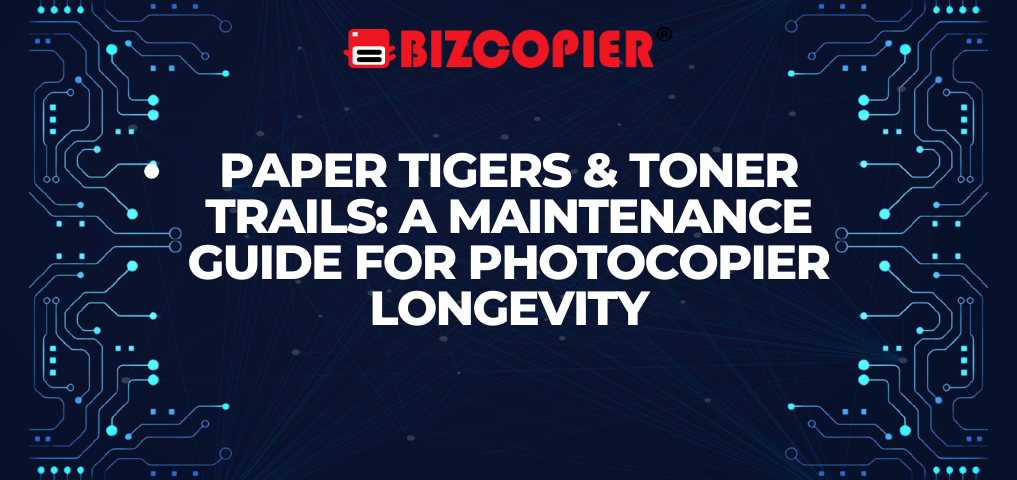Paper Tigers & Toner Trails: A Maintenance Guide for Photocopier Longevity (Advanced Edition) This advanced edition builds upon the foundation of the previous guide, diving deeper into specific maintenance tasks and offering additional strategies for ensuring your photocopier’s longevity. Conquering the Paper Battlefield: Beyond Jams: While paper jams are the most common enemy, understanding specific types and their causes empowers proactive prevention. Explore online resources or consult your manual for detailed troubleshooting on misfeeds, double feeds, and paper size issues. Advanced Cleaning: For the truly adventurous, tackle internal cleaning beyond compressed air. With caution and manufacturer-approved materials, carefully clean areas like feed rollers and pick-up assemblies to remove stubborn debris. Remember, professional cleaning remains safest for complex areas. Humidity Havoc: Fluctuations in humidity can wreak havoc on paper quality and machine performance. Invest in a hygrometer to monitor humidity levels and consider a humidifier or dehumidifier if necessary. Taming the Toner Tornado: Toner Troubleshooting: Beyond low toner levels, address issues like faint prints, streaking, and ghosting. Consult your manual or online resources for specific troubleshooting steps related to toner density settings, cleaning the drum unit, and replacing worn components. Third-Party Prowess: While compatible toners offer cost savings, choose wisely. Research reputable brands with positive reviews and warranties. Consider third-party remanufactured cartridges for even greater savings, but ensure compatibility and quality control. Toner Recycling: Be an eco-warrior! Many manufacturers offer toner cartridge recycling programs. Research options and participate to minimize environmental impact. Beyond the Basics Pro: Firmware Forensics: Delve deeper into firmware updates. Understand bug fixes addressed, performance improvements gained, and potential compatibility issues before updating. Consult your manufacturer’s support for comprehensive information. Preventative Maintenance Proactive: Don’t just react to problems; anticipate them. Based on your machine’s manual and usage patterns, create a preventative maintenance schedule that includes tasks like cleaning specific components at designated intervals. Diagnostic Deep Dive: Modern photocopiers often offer diagnostic tools. Learn how to access and interpret these tools to identify potential issues before they escalate. Consult your manual or manufacturer’s website for guidance. Bonus Tips Pro: Invest in training: Empower employees with basic troubleshooting skills to handle minor issues and report larger problems promptly. Track performance: Monitor print volume, toner usage, and error logs to identify trends and potential problems early on. Consider upgrades: As technology advances, evaluate upgrading specific components, like the drum unit or fuser, to extend the machine’s life and improve performance. Remember, knowledge is power! By understanding your photocopier, implementing proactive maintenance strategies, and being mindful of usage habits, you can transform it from a paper tiger and toner tornado into a reliable and long-lasting office ally. I hope this advanced edition provides even more valuable insights for maximizing your photocopier’s lifespan!









